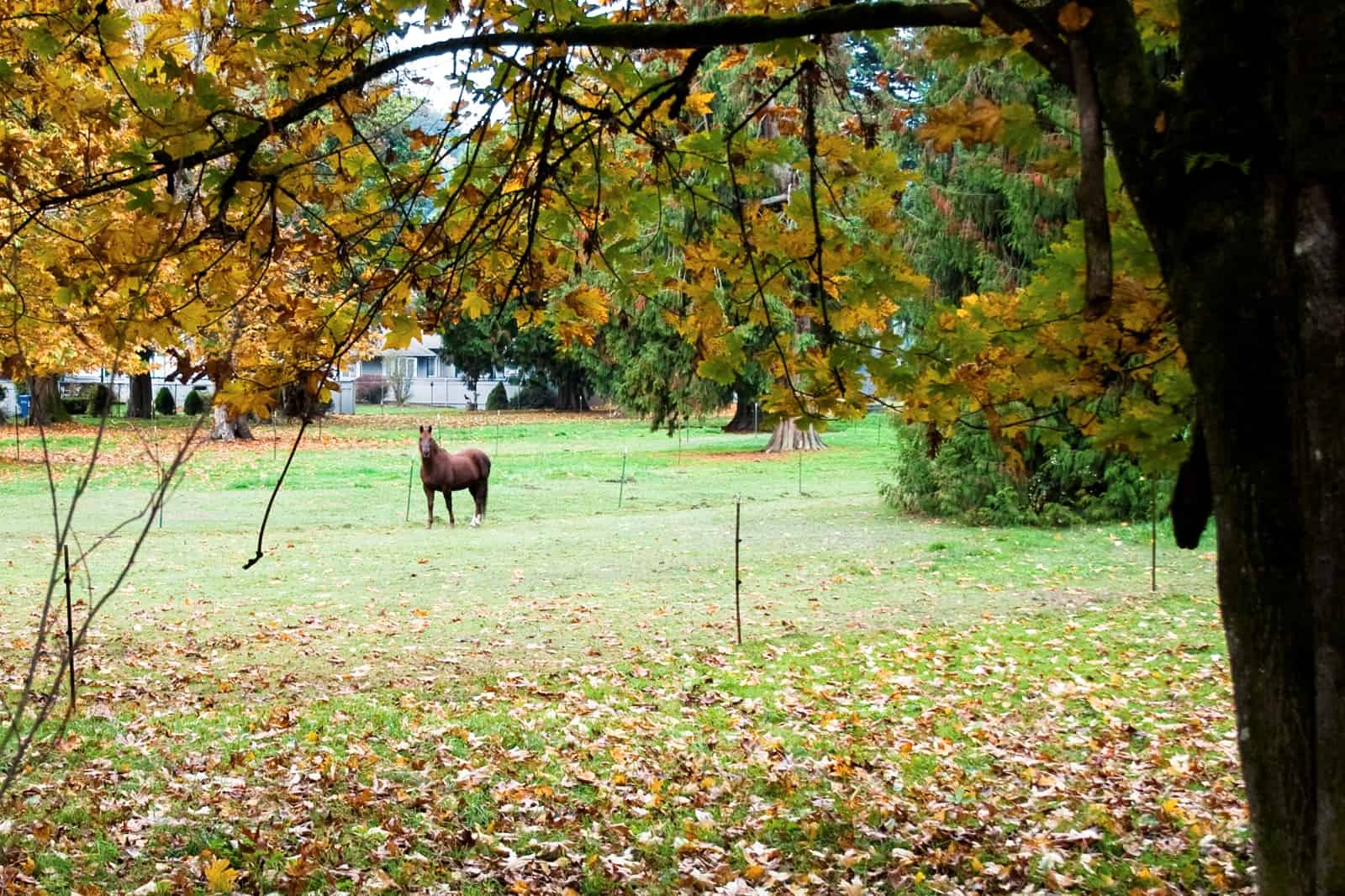Protecting Your Horse From Poisonous Fall Leaves
- Posted by Clair Thunes, PhD

A: The answer to your question is going to depend on the types of trees the leaves are coming from, which means you need to identify the trees. The easiest way to do this is to use an online identification tool or one of the many good identification books available. If you do not want to buy a book, your local library is likely a good resource with books covering trees common to your region.
Once you have identified the trees you can look them up in an online database and find out if they are poisonous. The American Society for the Prevention of Cruelty to Animals has an extensive list of poisonous trees and plants at www.ASPCA.org.
Acer and Prunus trees are often found around horse pastures and have leaves that are particularly poisonous to horses as they’re wilting.
Acer rubrum—commonly known as red maple, soft maple, or swamp maple—are native to the Eastern United States and Canada and stunning in the fall with their showy red leaves. While on the tree and alive, the leaves are fine; but once fallen and wilting, these leaves can be fatal to horses in relatively small quantities. As little as 1.5 to 3 grams per kilogram (that’s about 0.05 to 0.11 ounces per 2.2 pounds) of body weight can cause hemolytic (red blood cell-destroying) disease. Wilting leaves are thought to contain gallic acid, which can lead to red blood cell breakdown and hemolytic anemia (in which the body’s immune system attacks and kills its own red blood cells). While leaves that fall from the tree and wilt are poisonous year-round, it appears that those falling after mid-September contain the greatest concentration of gallic acid. Wilted leaves remain toxic for several weeks.
Horses that consume maple leaves often die within a couple of days. Initially after ingestion, a horse generally shows severe depression and becomes weak due to reduced oxygen flow around the body. Heart rate and respiration increase in an attempt to circulate oxygen, red or dark urine is often observed, and their mucus membranes (including the whites around the eyes) might appear slightly yellow. Ultimately, this inability to carry adequate oxygen via the blood leads to death.
The prognosis is typically poor. In a retrospective study of 32 equine cases of maple poisoning, 19 died. A number of clinical signs were observed including colic, fever, and laminitis. There is no cure, so horses that have eaten red maple leaves receive supportive care, including fluid therapy.
Not all red maples are toxic, however other species—including sugar maples and silver maples—have been found to contain gallic acid and should be avoided. To be safe, I would suggest trying to avoid having all maples in areas where horses could consume the leaves.
The Prunus family, of which there are 200 species, include the stone fruit trees: plums, apricots, peaches, and cherries. While less toxic to horses than cattle, the fruit stones contain cyanide and the leaves are particularly toxic while wilting. Choke cherries and black cherries are considered the most dangerous of the Eastern wild cherries.
Clinical signs of cyanide poisoning include increased heart and respiration rates, with horses breathing heavily trough flared nostrils. Cyanogenic glycosides cause bright red mucus membranes, dilated pupils, difficulty breathing, and shock. It’s possible to treat horses found early in the disease course by using chemicals that bind the cyanide, allowing cellular oxygen transport to be unblocked.
In the case of both Acer and Prunus trees, look for leaves that have fallen off these trees, as well as branches with leaves that have blown down and become available for horses to eat.
As we move in to fall, the nutritional value of pasture grass, even grass that looks green and plentiful, drops dramatically. As a result your horse might be more inclined to look for things to eat that would not normally interest him, including leaves. You can make leaves less appealing by supplementing pasture intake with good-quality hay.

Written by:
Clair Thunes, PhD
Related Articles
Stay on top of the most recent Horse Health news with
















2 Responses
Move the tree.
I found your article very educating. I have 2 mini donkeys and there is an apricot tree where we want to expand their pasture. We just moved to SC from mid-Fl. Should we cut the tree down?